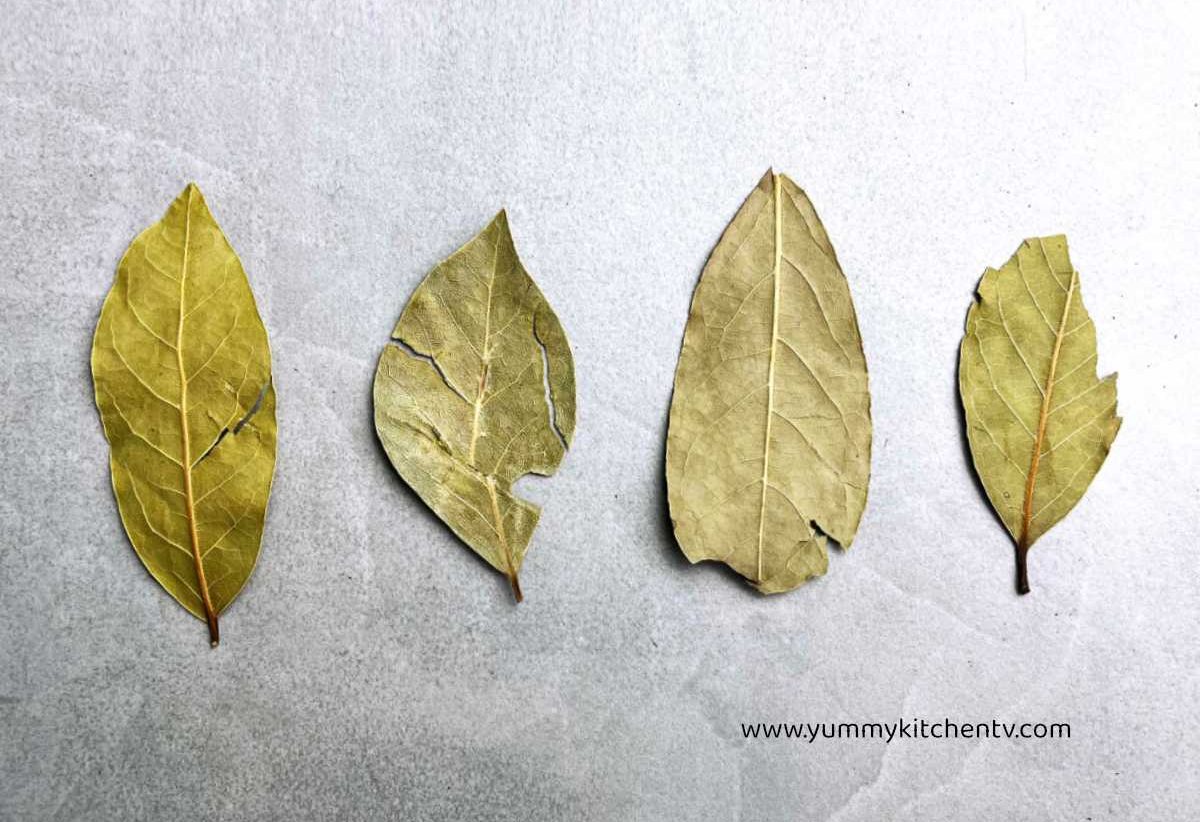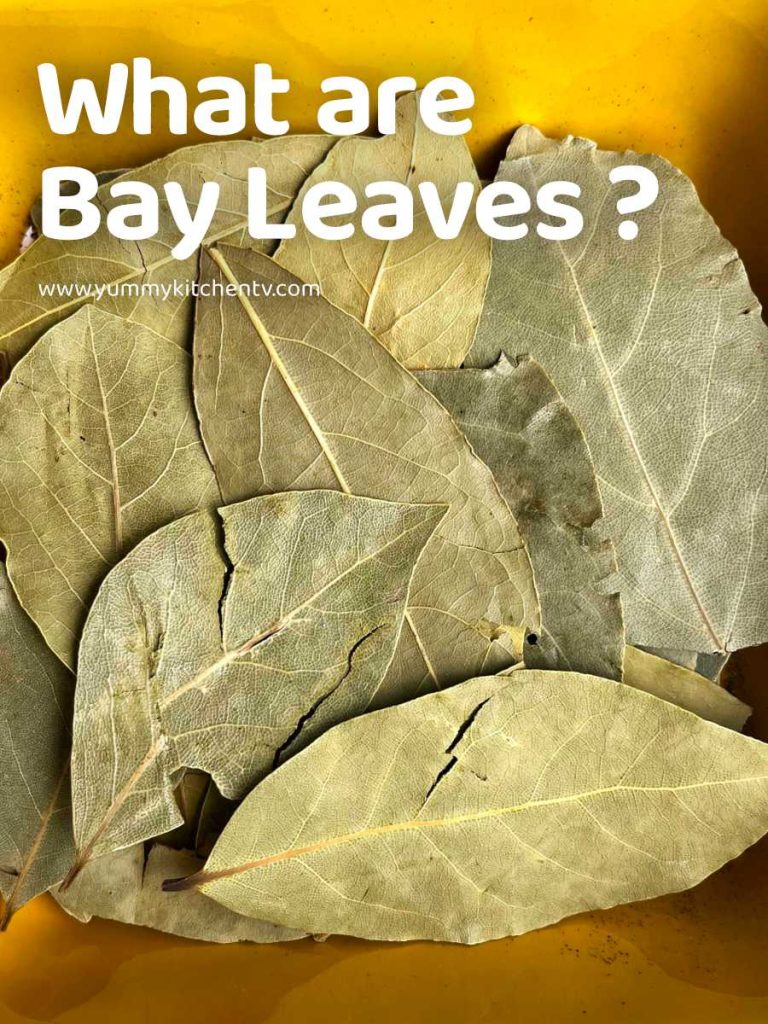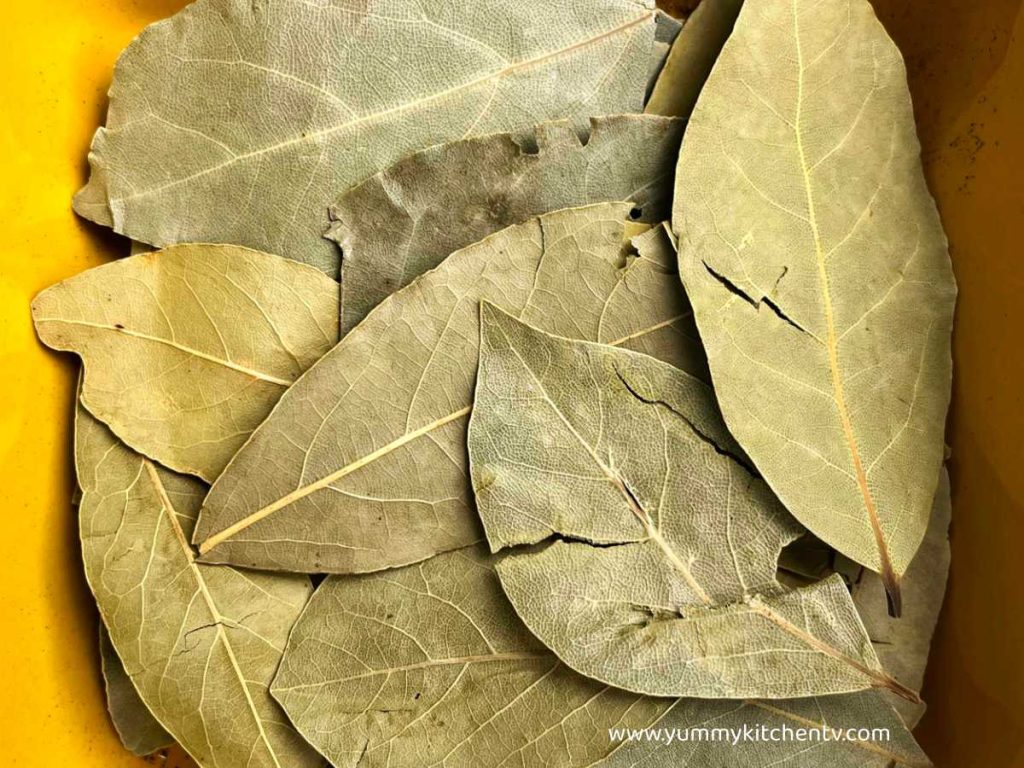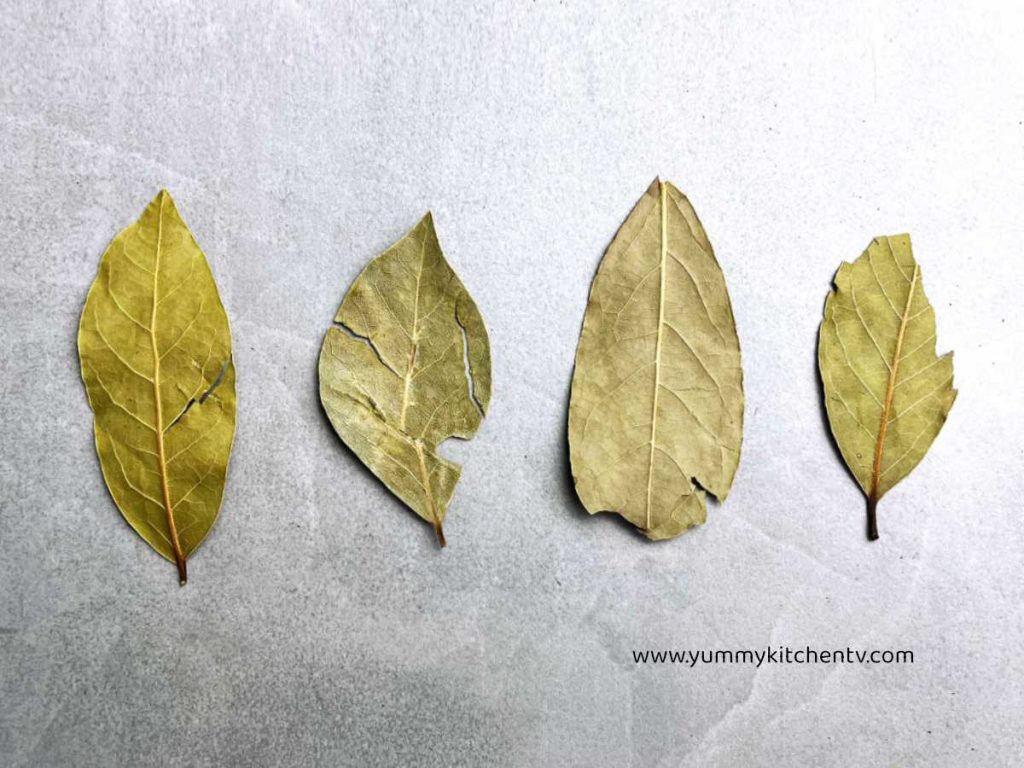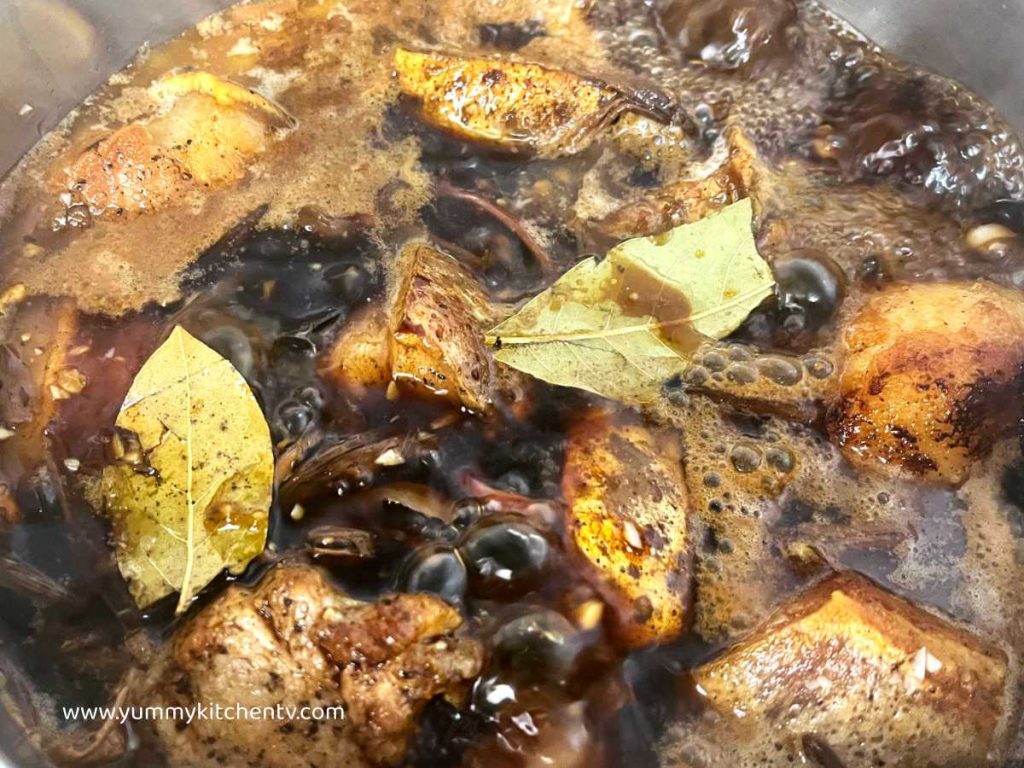Bay Leaves from the Bay Tree or “Laurus Nobilis’ originating from the Mediterranean, are an aromatic leaf-herb commonly used fresh, dried, or powdered in cooking, with some traditions using it to repel bad energies or to attract good vibes (and money). This herb with a strong aroma, has a slight bitter taste when dried as it’s even more bitter when fresh, these are often described as almost having a similar flavor to a thyme and or oregano but subtly medicinal. A spice that can be found used commonly in savory dishes such as soups and stews, for marinating, curing, bringing, or pickling.
A short introduction to Bay Leaves
Where do bay leaves come from? The Bay Leaf plant (bay leaf scientific name “Laurus Nobilis” ) sometimes called ‘laurel leaves’ has a rich history aside from being used as your usual spice-flavoring. Having gone through almost every civilization, the spice has even been mentioned in Chinese mythology as it has in many tales, connections to the phases of the moon. As the story starts with a woodsman whose punishment was to trim a giant tree that would constantly regrow even though it was just pruned. The type of tree foretold was then changed into the bay leaf tree. Onother story comes from the West, as these have originated from the Mediterranean region. Coming from Greek mythology, Apollo the sun god rode this chariot across the sky and noticed the beautiful Daphne, a mountain nymph who did not want any of his attention. She called out to Mother Gaia the goddess of earth and life for help. Daphne was able to run away from Apollo, who was left with a laurel tree in her place. Saddened, he then took some leaves to create a crown for himself which he is still depicted with in images of today. These leaves back then were seen as a symbol for an ‘unrequited love’ which turned into a crown given for those who have made heroic feats in Pythian games (similar to the Olympics) which were held in Apollo’s honor. Another story of where it came to be is from the Romans who believed that this herb embodies ‘power’, ‘victory’, and ‘one’s status’. These were so important to the Romans that it was forbidden to be offered to the gods. During his time, Emperor Augustus planted these trees outside of his home and outside the temple of Apollo to indicate his devotion and praise for the said god’s help during the Roman Civil Wars.
How to dry bay leaves? Fresh bay leaves are laid under paper towels or sheets outside homes over the morning sun in a single layer. They typically dry up after 15 days more or less. Flipping these weekly to dry evenly. This method also helps keep the herb’s essential oils intact. Some have also used a dehydrator or oven for a quicker option, though these may burn or release too much of the oils. Used fresh or dried in cooking, whole or in its powdered form. This fragrant floral leaf-herb with a taste similar to oregano or thyme are not just great for removing any foul and or gamey taste or smell, these help deepen the flavors of the brine marinade, or sauces.
Bay Leaves Benefits
While these seem to just add an extra ‘oompf’ to the dish, this spice can actually benefit the body. Here are examples of bay leaf medicinal uses:
- Improves the body’s immunity, as it has anti-bacterial and anti-imflamatory properties, Vitamins A, B6, and C that supports the body.
- Helps with digestion and sinuses. Drank as aromatic tea helps clear stuffy noses and can ease an upset stomach. (see notes below*)
- Controls blood sugar which in turn can aslo help lower cholesterol levels.
- Bay leaf benefits for hair? This spice is actually found in hair care products to promote hair growth. Compounds found in the leaves (linalool and eugenol) soothes the skin and can reduce inflammation (on the scalp).
* Bay leaf tea side effects : Drinking or eating large amounts of bay leaves can be dangerous as it can cause bloating, gastrointestinal issues, diarrhea, headache, and sleepiness (it slows down the nervous system). Do drink just a glass a day, or as recommended by a doctor.
How to make bay leaf tea?
- Bring some water to a boil before adding fresh bay leaves. Simmer in water for 3 – 5 minutes depending on how strong you’d like the tea to be.
- Add in ginger, lemongrass, or mint leaves for additional flavor and cover the pot. Simmer for a few minutes, giving it a taste and simmering for longer till you get the desired taste.
- Let it cool down to desired temperature. hot or warm to slightly cold to make into iced tea.
* Optional : Add sugar, honey, or any sweetener of choice to taste.
Bay Leaves Uses
What do bay leaves do aside from being added into food? Is there a specific use traditionally or are there any bay leaf spiritual meaning in some cultures?
- Aside from being used as a flavoring in many stews, soups, and brines. Throughout history they have been planted outside homes or burned to use as pest(moth) repellent, and in paste form as traditional medicine as a pain reliever.
- In ancient times and some countries, these were used as a natural air purifier, some still use them in their cars as an air freshener.
- In some traditions, beliefs, or manifestations state that burning bay leaves for money is one of the best ways to use this leaf-spice. The burning of the spice releases essential oils and scent creating a calming aroma wafting around the room that helps calm the body and mind. This in turn relieves oneself of anxiety to keep you focused on attaining your financial goals.
- Other burning bay leaves benefits? Similar to above, these are said to attract money and abundance. This is because this ‘Magical herb’ is said to banish negative energy and break evil spells.
Bay Leaf Substitutes
Use these options in their fresh or dry form.
- Oregano – slightly peppery when fresh, gives an earthy bold, slightly minty and sweet taste.
- Basil – the best substitute for Italian dishes, aromatic, has a sweet, subtly spicy, peppery, and minty, with a savory hit.
- Rosemary – has a robust flavor, with a slightly citrusy and minty flavor, hints of sage, pepper, and pine. Best for meats especially gamey-meats.
- Thyme – both have an almost similar taste, thyme has a slightly minty and citrusy taste, there’s also a hint of woody floral lavender in this as well.
- Sage – the looks are quite similar but bay leaves are better used for soups and stews, while sage is best used for stuffing.
Dahon ng Laurel
Bay leaves or ‘Dahon ng Laurel’ in Tagalog is a spice that was introduced by Spaniards to the Philippines. Their traditions and cooking methods slowly assimilated to Filipino cuisine, so much so many of the Spanish-inspired food are sure to have certain spices added. One of them being ‘dahon ng laurel’ in the ever popular adobo, tomato based stews like afritada and menudo, in curing liquids and many others. Check out some of Yummy Kitchen’s best bay leaf recipes down below!
Bay Leaf Recipes
- Adobo Recipes
- Adobong Galunggong – Adobo made with scad fish.
- Adobong Baboy with Pineapple – Pork Adobo with pineapple bits for an added sweetness, the fruit also helps tenderize the meat.
- Chicken Adobo
- Chicken Liver Adobo
- Adobong Paa ng Manok – Chicken Feet Adobo
- Chicken Mechado – a savory rich tomato-based chicken stew.
- Pork Asado – a sweet and savory pork dish served with a smooth and thick tomato based sauce.
- Pata Tim – A Filipino dish with Chinese origins, pork hock slow cooked in a sweet and rich spiced broth.
- Pork Estofado – fried pork belly, fried bananas, coated in a sweet and savory sauce.
- Pork Humba – A FIlipino pork dish made by simmering pork in a sweet, savory, and salty sauce made of pineapples, banana blossoms, and the usual aromatics.
- Crispy Pork Belly
- Lechon Manok sa Kawali – a dish made with spices and bay leaf chicken cooked lechon style.
- Paksiw na Pork Ribs – pork ribs made even better sauteed with lechon sauce.
- Braised Pork Spareribs

